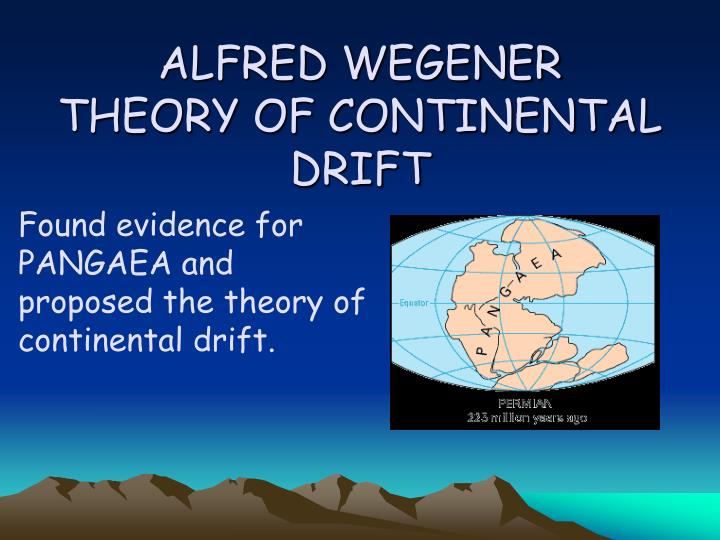

One piece of evidence Wegener provided was paleoclimatic indicators that linked South America and Africa (Plate Tectonics: Continental Drift). His formal and well-supported introduction to the theory informed and split geoscientists into two opposing groups that would engage in a fifty year debate drifters vs.

He used these to introduce his idea of continental drift to the Geological Society of Germany in January of 1912 (Continental Drift). He compiled and collected considerable evidence to support this idea (Continental Drift). Although their mechanisms or parts of their ideas were incorrect, it was important that geoscience probed the idea that the continents were not stationary, isolated entities.Īlfred Wegener, a German meteorologist, also noticed how the continents fit together. His theory included that the continents broke apart, but his mechanism involved the effects of the close approach of the planet Venus (Mountain Building and Drifting Continents). Geologist Howard Baker provided the first detailed reconstruction of the continents as one supercontinent (Mountain Building and Drifting Continents). Then, volcanic activity due to thermal expansion broke the continents away and created the oceans (Robert Mantovani). He proposed that the earth was originally much smaller and that a single continent covered the entire earth (Robert Mantovani). In these he described his expanding-earth theory. Robert Mantovani, an Italian geologist, proposed in his works published in 18 that the continents were once one single mass (Robert Mantovani). He believed that lunar gravity dragged the continents to the equator during the Cretaceous (Continental Drift). He based this on the geographic fit of Africa and South America, along with research he did on their respective mountain chains (Frank Bursley Taylor). In 1908, Frank Bursley Taylor proposed to the GSA that continents moved on the Earth’s surface, and mountains were uplifted by continental collisions (Frank Bursley Taylor). With the addition of more evidence, some members of the scientific community began to believe that the continents were in fact not fixed in place. In the mid 1800’s, Antonio Snider-Pelligrini acknowledged that the same plant fossils were in the coal beds of Europe and North America at places where the continents seemed to have fit together geographically (Plate Tectonics: Continental Drift). As time progressed, other forms of evidence emerged supporting that the continents were once joined as one. This was observed and noted as early as 1596 by Abraham Ortelius (Continental Drift). Over millions of years the pieces separated, first into two smaller supercontinents, Laurasia and Gondwanaland, during the Jurassic period and then by the end of the Cretaceous period into the continents we know today.It was no mystery that Africa and South America appear to fit together like a jigsaw puzzle.

Continental drift was a revolutionary scientific theory developed in the years 1908-1912 by Alfred Wegener (1880-1930), a German meteorologist, climatologist, and geophysicist, that put forth the hypothesis that the continents had all originally been a part of one enormous landmass or supercontinent about 240 million years ago before breaking apart and drifting to their current locations. Based on the work of previous scientists who had theorized about horizontal movement of the continents over the Earth's surface during different periods of geologic time, and based on his own observations drawing from different fields of science, Wegener postulated that about 200 million years ago, a supercontinent that he called Pangaea (which means "all lands" in Greek) began to break up.


 0 kommentar(er)
0 kommentar(er)
